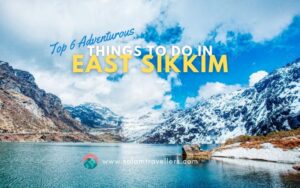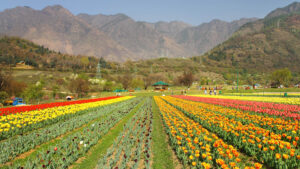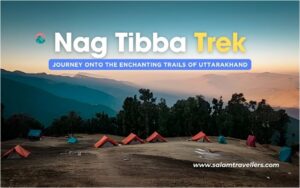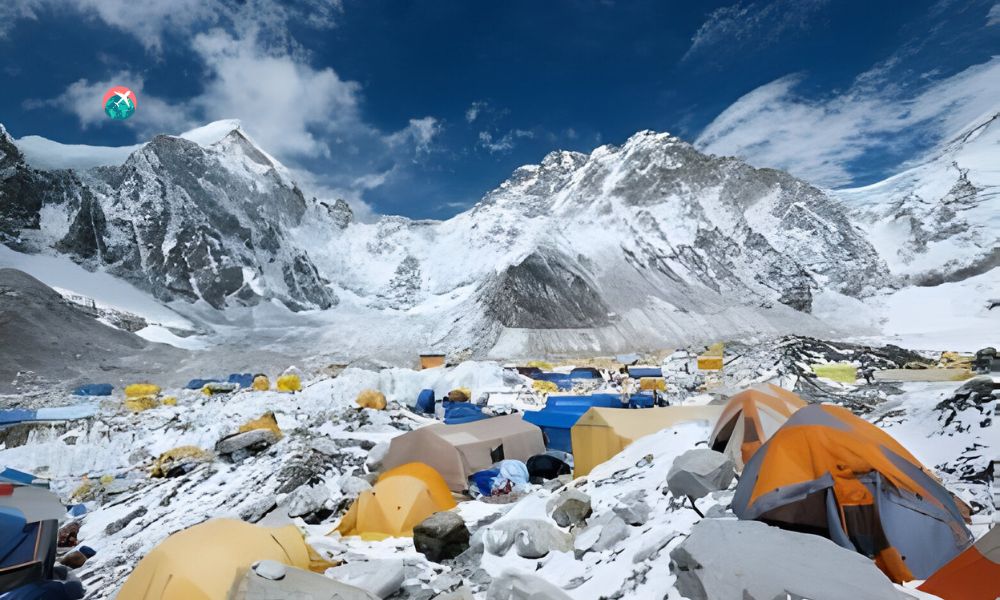
The Everest Base Camp trek (EBC) is considered one of the greatest treks in the world. This iconic Himalayan journey takes you through majestic landscapes and charming Sherpa villages to the foot of Mount Everest, the tallest mountain on Earth.
The EBC trek has become immensely popular in recent years. Thousands of trekkers from around the world flock to Nepal every year to undertake this life-changing adventure. The trek follows the route taken by Sir Edmund Hillary and Tenzing Norgay during their historic first ascent of Everest in 1953. Ever since then, EBC has held an almost mystical allure for mountaineers, adventurers, and trekkers alike.
Also read: Kedarnath Temple Trek
| Key | Value |
| Location (South) | Nepal |
| Elevation (South) | 5,364 metres (17,598 ft) |
| Location (North) | Tibet |
| Elevation (North) | 5,150 metres (16,900 ft) |
| Access (South) | Lukla Airport |
| Access (North) | Permit required, road branching from China National Highway 318 |
| Purpose | Base camp for climbing Mount Everest |
| Other Uses | Visited by hikers |
| Challenges (South) | Altitude sickness |
| Challenges (North) | Permit required, road access closed to tourists since February 2019 |
(Source: https://en.wikipedia.org/wiki/Everest_base_camps)
How long does it take to hike to Everest Base Camp?
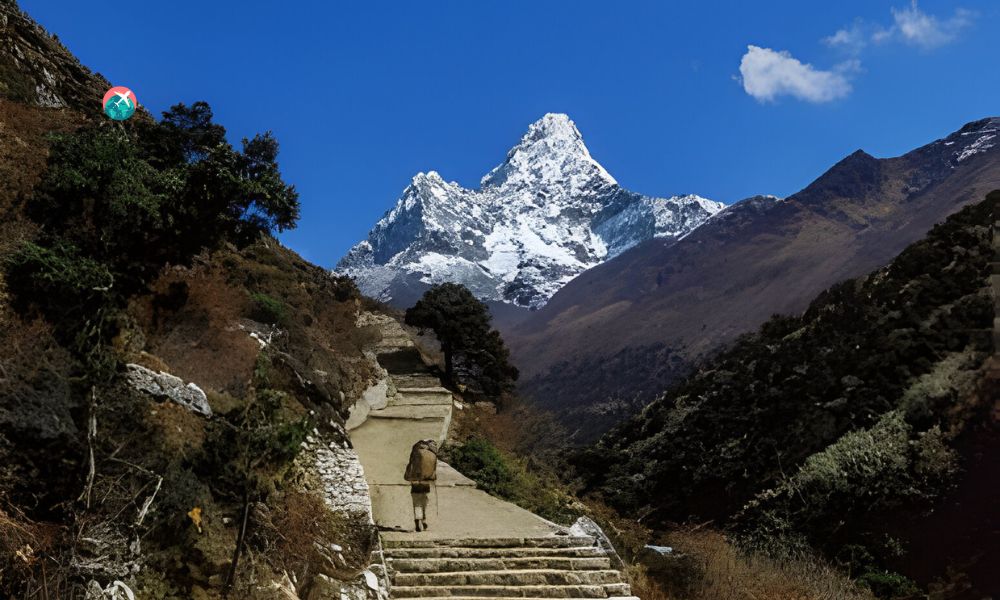
The Everest Base Camp trek typically starts from Lukla and ends in Gorak Shep. The total duration of the trek is around 12-14 days.
The route to Everest Base Camp is as follows:
- Fly from Kathmandu to Lukla (2840m).
- Trek from Lukla to Phakding (2610m) – 3-4 hours.
- Acclimatization day at Namche Bazaar.
- Namche Bazaar to Tengboche (3870m) – 4-5 hours.
- Tengboche to Dingboche (4410m) – 5-6 hours.
- Acclimatization day at Dingboche.
- Dingboche to Lobuche (4940m) – 5-6 hours.
- Lobuche to Gorak Shep (5160m) – 2-3 hours.
- Gorak Shep to Everest Base Camp (5364m) and back (6–8 hours return) This is the most challenging day.
- Gorak Shep to Kala Patthar (5545m) for sunrise views and back to Lobuche (7-8 hours).
- Lobuche to Namche Bazaar – 6-7 hours.
- Namche Bazaar to Lukla – 7-8 hours.
Also read: Bali Pass Trek
How hard is the Everest Base Camp trek?
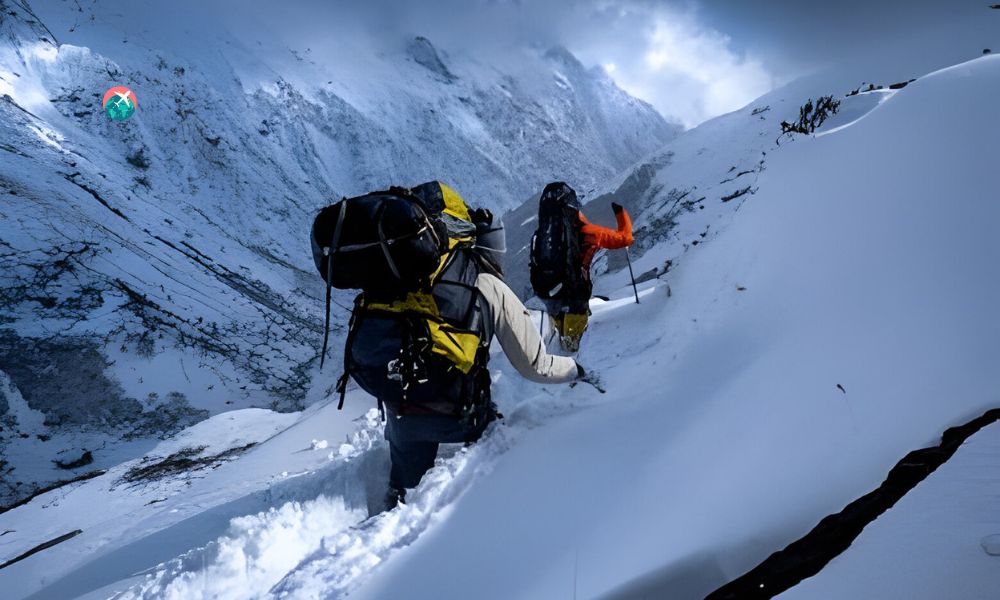
The total trekking distance is around 130 km over 12-14 days. The difficulty level is moderate to strenuous, especially on days involving ascents to higher altitudes. Proper acclimatization is important. Trekkers should be relatively fit and prepared both physically and mentally for the challenging trek. The route involves ascents, descents, river crossings, and walking on uneven terrain.
Also read: Friendship Peak Trek Itinerary
Best Time to Go
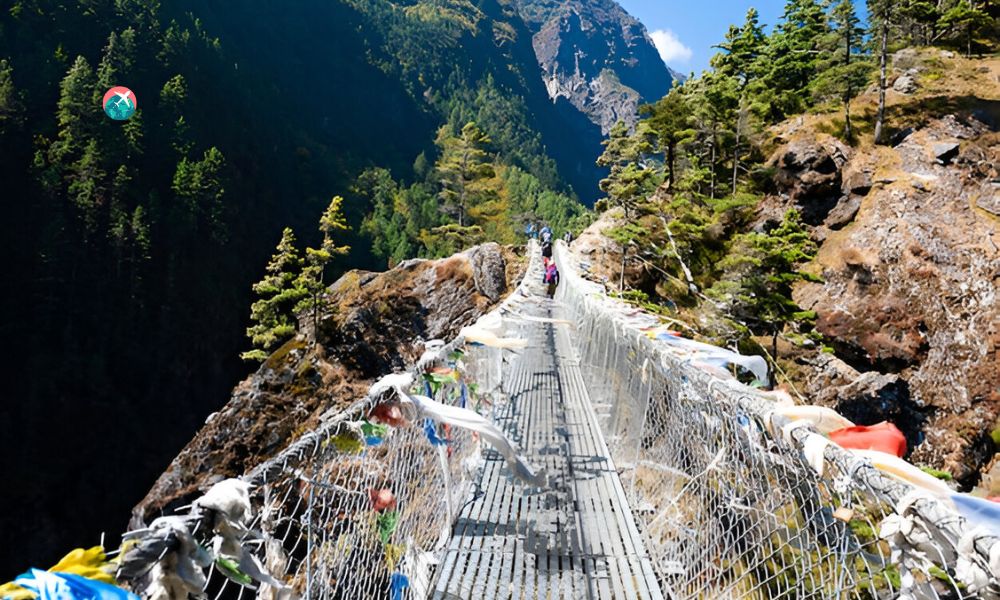
The best time to trek to Everest Base Camp depends on the weather conditions and your preferences for crowds. Here are the main options:
Spring (March to May)
- The pre-monsoon spring season offers moderate temperatures and mostly clear skies. Daytime highs at lower elevations reach 60-70°F.
- Precipitation and cloudiness increase progressively, starting in late April. May can be rainy, with some snow at higher elevations.
- Spring’s comfortable weather makes it the busiest and most popular season. Trails get crowded with other trekkers.
Also read: The Brahmatal Trek in Uttarakhand
Autumn (September to November)
- The post-monsoon autumn season provides the clearest skies. Visibility is excellent for mountain views.
- Temperatures cool down at night, with lows around freezing. Daytime highs at lower elevations reach 60-70°F.
- The weather is driest from late September to early November. Late November may see some snow.
- Autumn trails are less crowded than spring. But lodges can still fill up in peak seasons.
Also read: Beas Kund Trek
Winter (December to February)
- The winter season brings freezing temperatures, high winds, and heavy snowfall. Daytime highs at lower elevations are around 32-50°F.
- Trails may be icy and require crampons. Avalanches are also a hazard after heavy snow.
- Accommodations and flights may be limited. But you’ll get the route to yourself without crowds.
Also read: The Kedarkantha Trek
Permits and Fees
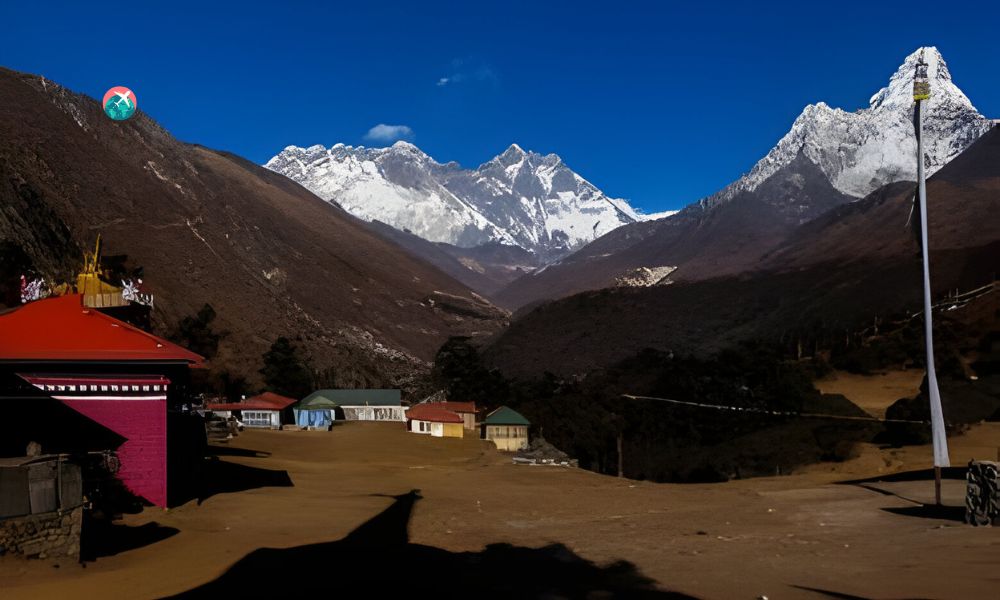
The Nepalese government issues permits for trekking to Everest Base Camp. The two main permits are:
TIMS Card
In Nepal, obtaining a Trekker’s Information Management System (TIMS) card is mandatory for all hikers. This costs around $20 per person and can be obtained from the Nepal Tourism Board office in Kathmandu. The TIMS card is used to track trekkers for safety purposes.
Sagarmatha National Park Fee
The Everest region falls within Sagarmatha National Park. There is an entrance fee of around $30 per person to enter the park. This can be paid at the park entrance near Monjo village. The park fee helps support conservation and services in the Khumbu region.
Also read: Nag Tibba Trek
Camping
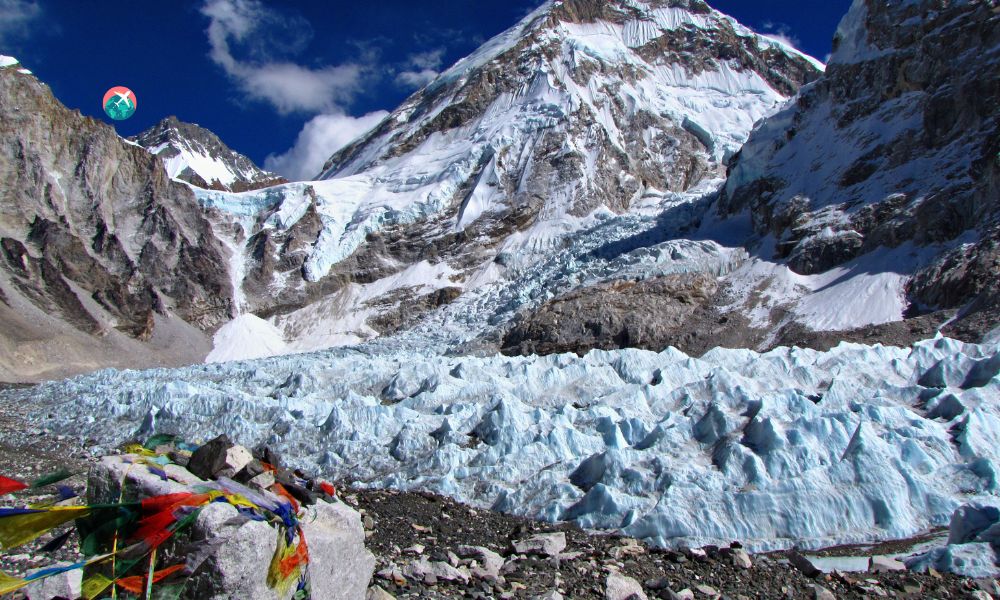
Camping is the other option if you want to be completely self-sufficient. You will need to carry a tent, sleeping bag, mattress, and cooking supplies. Campsites are available along the trail for a small fee.
Camping allows you to get away from the crowds at the teahouses. But it requires more gear and skills. You also need porters to transport heavier equipment.
Also read: Top 6 Adventurous Things to Do in East Sikkim
Water and Food for the Trek to Everest Base Camp
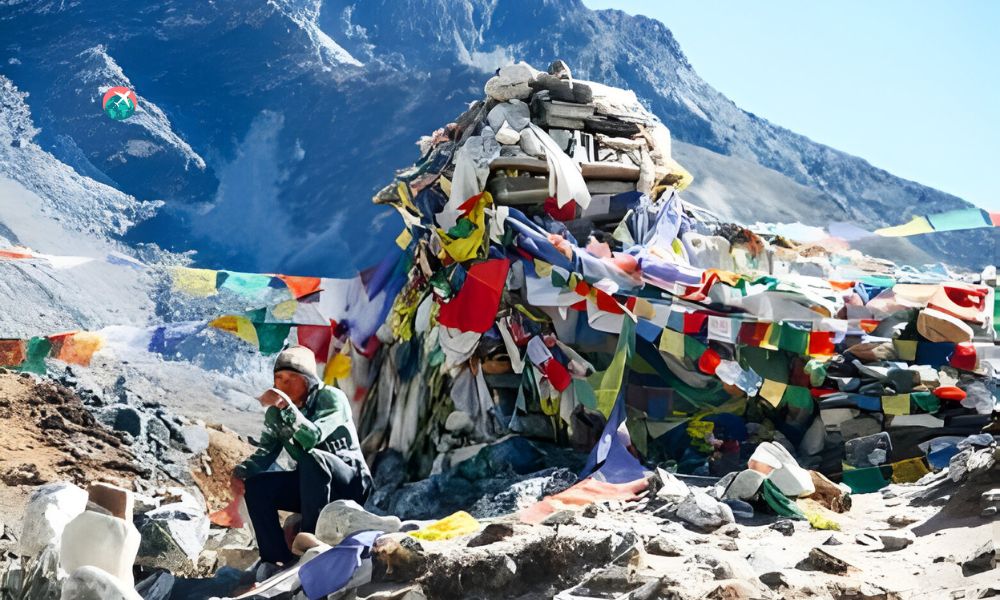
The Everest region has a well-developed system of teahouses that cater to trekkers along the route to Base Camp. These offer basic but filling meals like dal bhat (rice, lentils, and vegetables), noodles, momos, and more. Prices increase as you gain elevation, but they are still reasonable. Most trekkers can get by on $15-20 per day on food.
Teahouses also prepare packed lunches of items like sandwiches, boiled eggs, fruit, and cookies to take along for day hikes. It’s advisable to carry your snacks too.
Also read: Top 10 Things to Do in North Sikkim
Altitude Sickness
Altitude sickness is a common condition that can affect trekkers ascending quickly to high elevations like Everest Base Camp. It’s caused by reduced oxygen levels at higher altitudes. The higher and faster you climb, the more likely you are to develop symptoms.
Also read: Kodachadri trek
Causes
As you gain elevation, barometric pressure decreases, and the amount of oxygen available goes down. This is why many people start experiencing altitude sickness above 8,000 feet. Your body requires time to get used to the reduced oxygen levels. When you ascend too rapidly, your body cannot acclimate quickly enough.
The lower oxygen levels can cause fluid to accumulate in the lungs and brain, leading to symptoms like headaches, nausea, and shortness of breath. Contributing risk factors include dehydration, overexertion, and pre-existing medical conditions.
Also read: Chopta Trek
Prevention
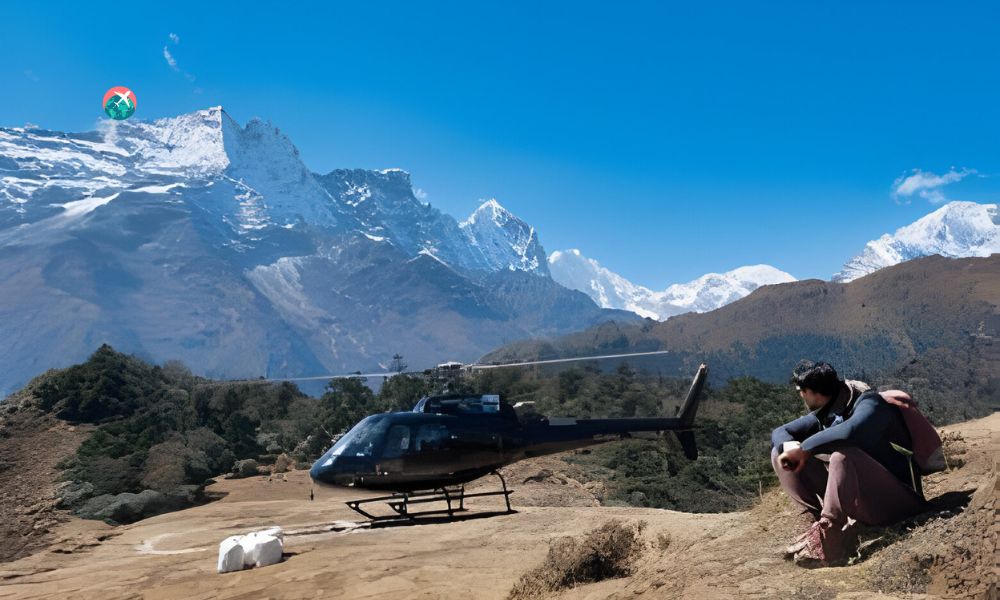
To prevent altitude sickness, it’s crucial to give your body time to acclimatize. When trekking to Everest Base Camp, you should ascend slowly and avoid gaining more than 1,000 feet per day above 8,000 feet. Proper acclimatization usually requires spending 2 to 4 days sleeping at each new altitude benchmark.
Staying hydrated is also key. The high elevation causes you to lose more fluids and become dehydrated more quickly. Eat carbohydrate-rich foods for energy, and make sure you get adequate rest. Diamox is a medication that can help aid acclimatization.
Also read: 9 Best Adventure activities in Gulmarg
Treatment
Mild symptoms can often be treated with rest, hydration, light foods, and medications like acetaminophen. More severe cases may require descending to a lower elevation or supplemental oxygen. Evacuation or hospitalization is necessary if fluid builds up in the lungs (HAPE) or brain (HACE). These conditions can be life-threatening.
Carefully monitoring your symptoms and adjusting your ascent rate is the best way to avoid severe complications from altitude sickness on the Everest Base Camp trek. Listen to your body and be willing to turn around if your symptoms persist or worsen. It is better to be safe than sorry at high altitudes.
Also read: 8 Things to Do in Pahalgam in the Winter
What to pack for Everest Base Camp Trek?
When packing for the Everest Base Camp trek, focus on bringing layers, essential gear, and a few key items to ensure your comfort and safety.
Clothing
- Base layers – Synthetic or Merino wool long underwear, tops, and bottoms
- Insulating layers – Fleece jackets and pants
- Shell layers – Waterproof and breathable outer jackets and pants
- Hiking pants – Quick dry synthetic
- Hiking shirts – Synthetic, wool, or quick-dry
- Socks – Wool hiking socks
- Underwear
- Sports bras
- Winter hat
- Balaclava
- Gloves – Lightweight and heavy-duty
Gear
- Hiking boots
- Waterproof with ankle support
- Trekking poles
- Backpack
- At least 30L capacity
- Headlamp
- Water bottles or hydration system
- Sunglasses
- Sun hat
- Bandana or buff
Other Essentials
- Toilet paper
- Hand sanitizer and wipes
- Personal medications
- First aid kit
- Insect repellant
- Sunscreen
- Lip balm with SPF
- Travel towel
- Ear plugs
How much does it cost to trek to Everest Base Camp?
The costs of the Everest Base Camp trek can vary depending on a number of factors, but here’s a general breakdown of what to expect:
Permit Fees
You’ll need to obtain a TIMS (Trekkers’ Information Management System) card and a Sagarmatha National Park permit. Together, these will cost around $40 USD per person.
Accommodation Costs
Accommodation along the Everest Base Camp route ranges from very basic rooms in tea houses to more comfortable lodges. Expect to pay around $5-10 USD per night for basic rooms, or $10-20 USD for rooms with attached bathrooms in more upscale lodges.
Food Costs
Most meals on the trek will be at tea houses and lodges. You can expect to pay around $5-10 USD per meal on average. Simple dishes like dal bhat (rice and lentils) are just a few dollars.
Guide and Porter Costs
It’s recommended to hire a local guide and porters to assist with the trek. Guides cost around $25-30 USD per day, while porter rates are around $15-20 USD per day. Their meals will be an additional expense.
So in total, the budget is around $50-60 USD per day for costs like accommodation, food, permits, and guides/porters. The trek can be done for less on a tight budget, or more if you opt for greater comforts. But overall, Everest Base Camp remains one of the more affordable Himalayan treks out there.
Guided Trek
Booking with an agency for a guided Everest Base Camp trek means your accommodation, meals, porters, and often your flights and permits are all arranged for you. You trek as part of a group with a local guide. This takes the hassle out of planning and is a good option for less experienced trekkers. On the downside, guided treks move at the pace of the group and offer less flexibility.
Some of the best trekking agencies for Everest Base Camp include:
- Exodus
- Intrepid Travel
- G Adventures
- World Expeditions
Independent Trek
Trekking to Everest Base Camp independently means you plan everything yourself. You book accommodation and flights, hire porters and guides if needed, and trek at your own pace. This offers more flexibility but requires more research and effort to plan. You also need to arrange permits yourself through a local agency. Independent trekking is cheaper but less structured.
If trekking independently, make sure to thoroughly research the route, book accommodation in advance, and hire reputable guides. Many hikers recommend hiring a local guide, at least for the high-altitude sections, as they know the route well.
Is Everest Base Camp worth it?
Many trekkers find the experience of reaching Everest Base Camp to be a once-in-a-lifetime adventure, offering stunning views and a sense of accomplishment. However, it is important to be prepared for the physical challenges and altitude sickness that can come with such a high-altitude trek.
Stay tuned for more adventure guides from Salam Travellers.

